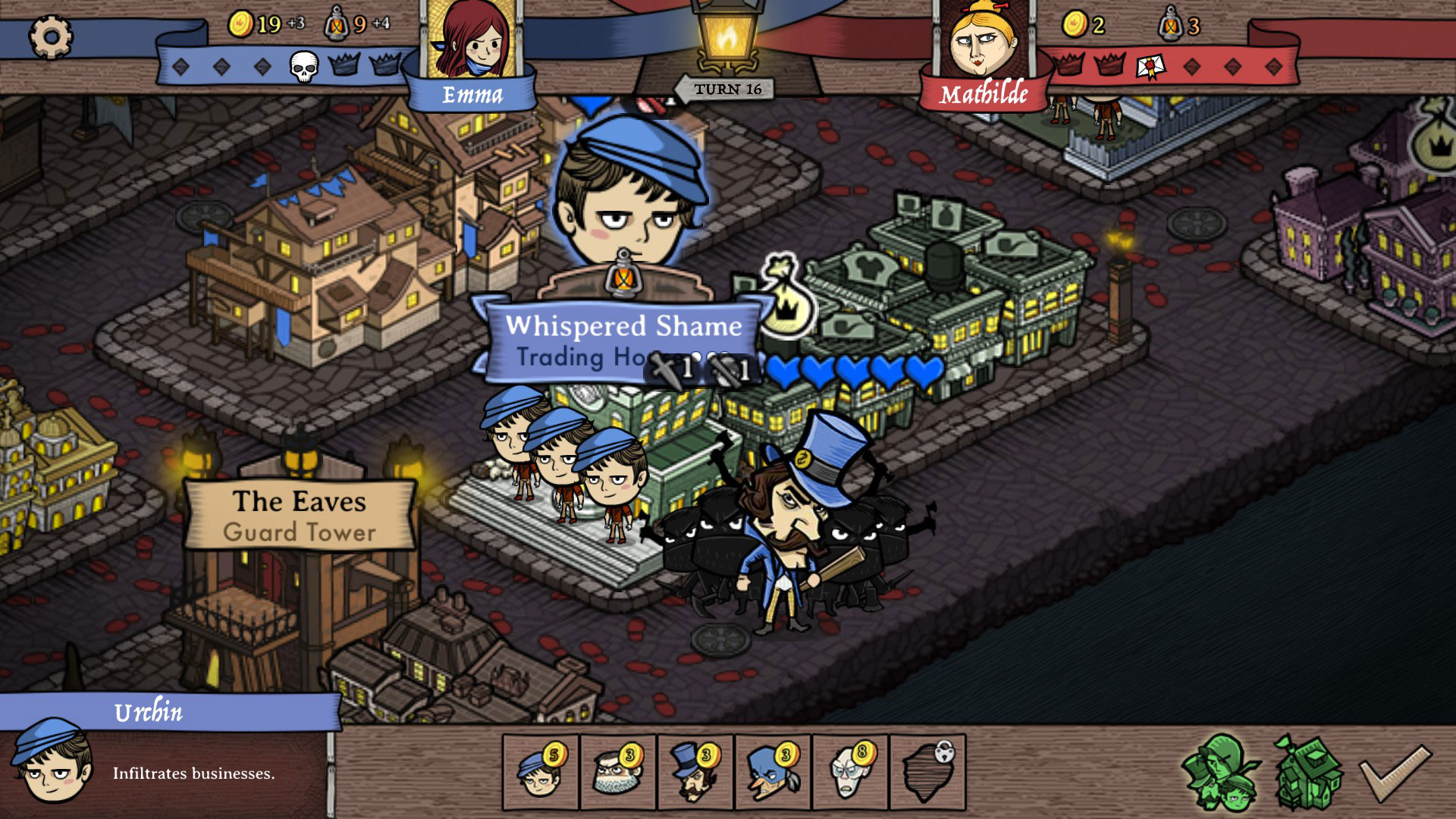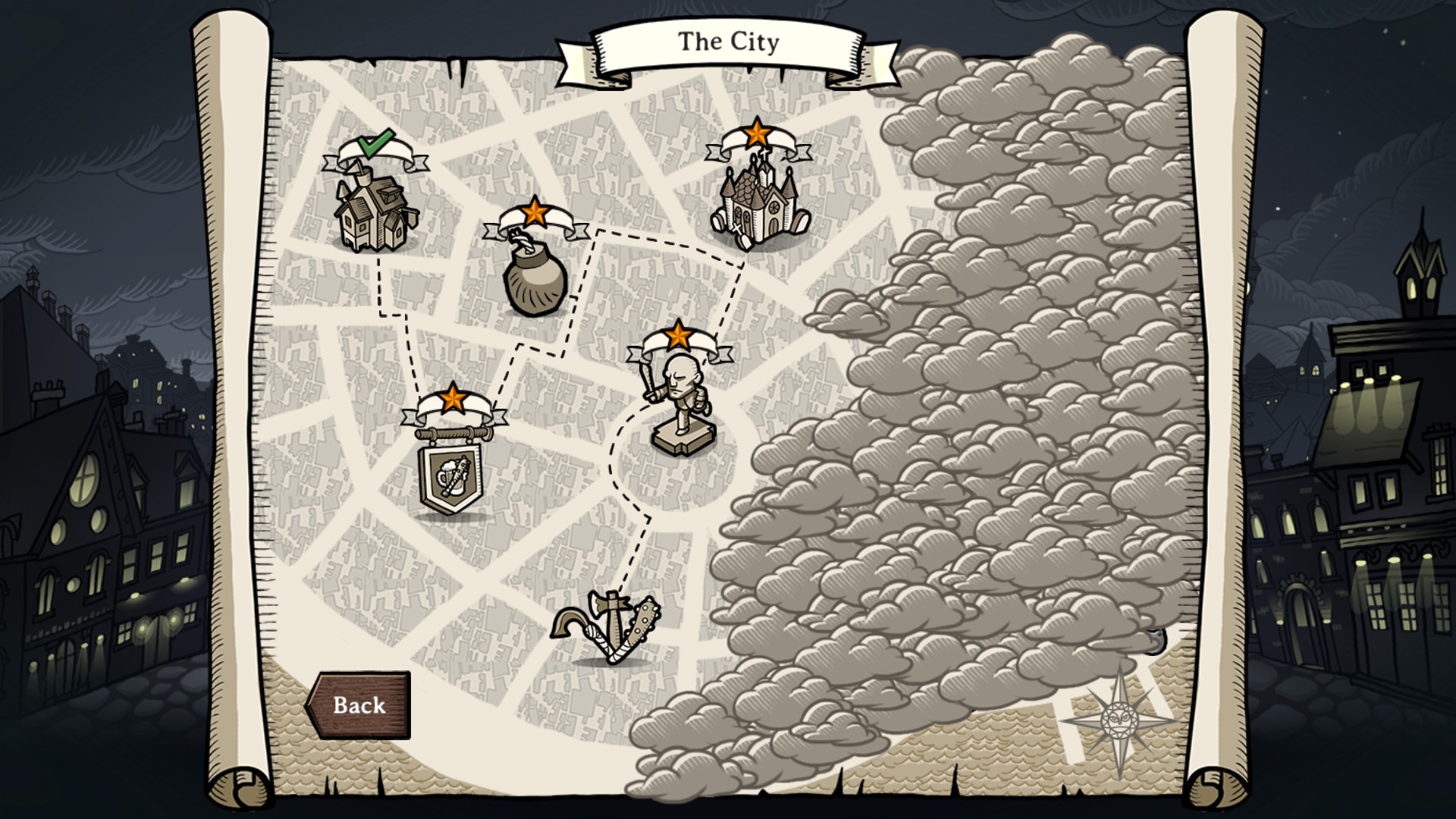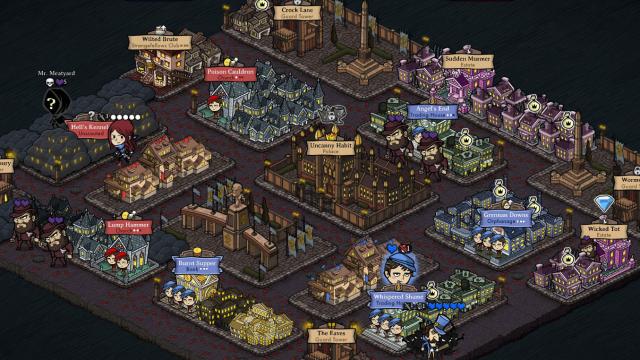Antihero, released on PC last month, is a game about managing a grimy, Victorian thieves guild. Which involves all the expected daily chores, such as murdering street thugs, bribing church officials, and sending little homeless kids off to occupy banks.
Creator Tim Conkling calls Antihero a “digital board game”, and it’s good to get that out of the way before you get started here. It plays very much like a board game, with a much greater emphasis on simply pitting competing systems against each other than bothering with more video gamey things such as, I don’t know, animation and day/night cycles.
Not that this is a bad-looking game! While it keeps things simple for the most part, the art style chosen really grew on me over the course of the game (the little nods to things such as Gangs of New York especially), and does a very good job of making everything you need to know about a unit or building available at a glance.

Such grim determination on the faces of my Dickensian horde.
Antihero has both a campaign and skirmish mode, but both ask the same general thing of you: Start on a map shrouded in fog with nothing but a single thief and a base, then slowly (or quickly, depending on the objectives) spread your criminal empire by hiring crooks, taking over buildings, robbing houses and completing assassination contracts.
The catch is that you have an opponent at the other end of the map who is trying to do the same thing. Games of Antihero have a limited slot of victory points, which can be completed by doing any of those things (and more), and the first player to claim the required number wins.
Given the board game feel here it’s little surprise that the basic skirmish mode is fun, but what surprised me is that Antihero‘s campaign is even better. There’s not much of a story going on but there is a ton of character on display, and the way new units and concepts are unveiled feels less like a tutorial and more like a cruisey progression towards increasingly complex and enjoyable missions. I also love that most missions are able to provide the same core objective — do certain things faster than your opponent — while keeping matters interesting by introducing fresh twists on the layout of a map or the way your units work.
Antihero works on a turn-based system. Each turn you control your primary unit — a Master Thief — the only character who is able to accomplish most of the actions available in the game. Your Master Thief has a certain number of actions available to them, and these can be spent on scouting, burglary or attacking other units. In addition you can also recruit a number of support units, ranging from street urchins (who can occupy buildings) to gang leaders (who can roam the streets assaulting your enemies) to assassins. These have highly specialised uses and can be employed once per turn (or in some cases once ever), so choosing when to best recruit and deploy these guys is where much of the game’s strategy comes from.

The campaign is basically a very long tutorial, only paced so well that it never actually feels like one.
The rest comes from the delicate balance between your need to harvest resources from the neighbourhoods around you and spend those resources on the units and upgrades you need to win. You can’t get too aggressive too early because you simply don’t have the cash to do so, while waiting too long to make your move will see you pipped to the objectives by a faster opponent. So Antihero is about learning how to best ride that line.
Beyond the setting and general premise, how much you enjoy Antihero might be contingent on how happy you are playing “board game rules” instead of “video game rules”. Like I mentioned, this isn’t a simulation, and its rules are kept very simple and straightforward. So you’ll find that a character can be blocked from moving down a street simply by having another character in front of them, or that attacks are resolved simply by having one unit run into another first.
Which is fine, I think, because this isn’t a game about tactics. Leave that for the actual video gamey video games. Antihero is a more sedate pursuit, a digital incarnation of a physical board game experience, where the pressures are turn-based and your worries are about deciding the best way to spend a limited cashflow, not what tools you’re going to equip a gang with or the type of stealth gear your Master Thief is wearing.
I really like Antihero! The flexibility you have in approaching a victory, the way each unit is highly specialised but also incredibly vulnerable and the delicate balance you need to strike to win, it’s a challenging and interesting strategy game that rarely plays the same way twice. If only I could get an actual board game copy of this…

Comments